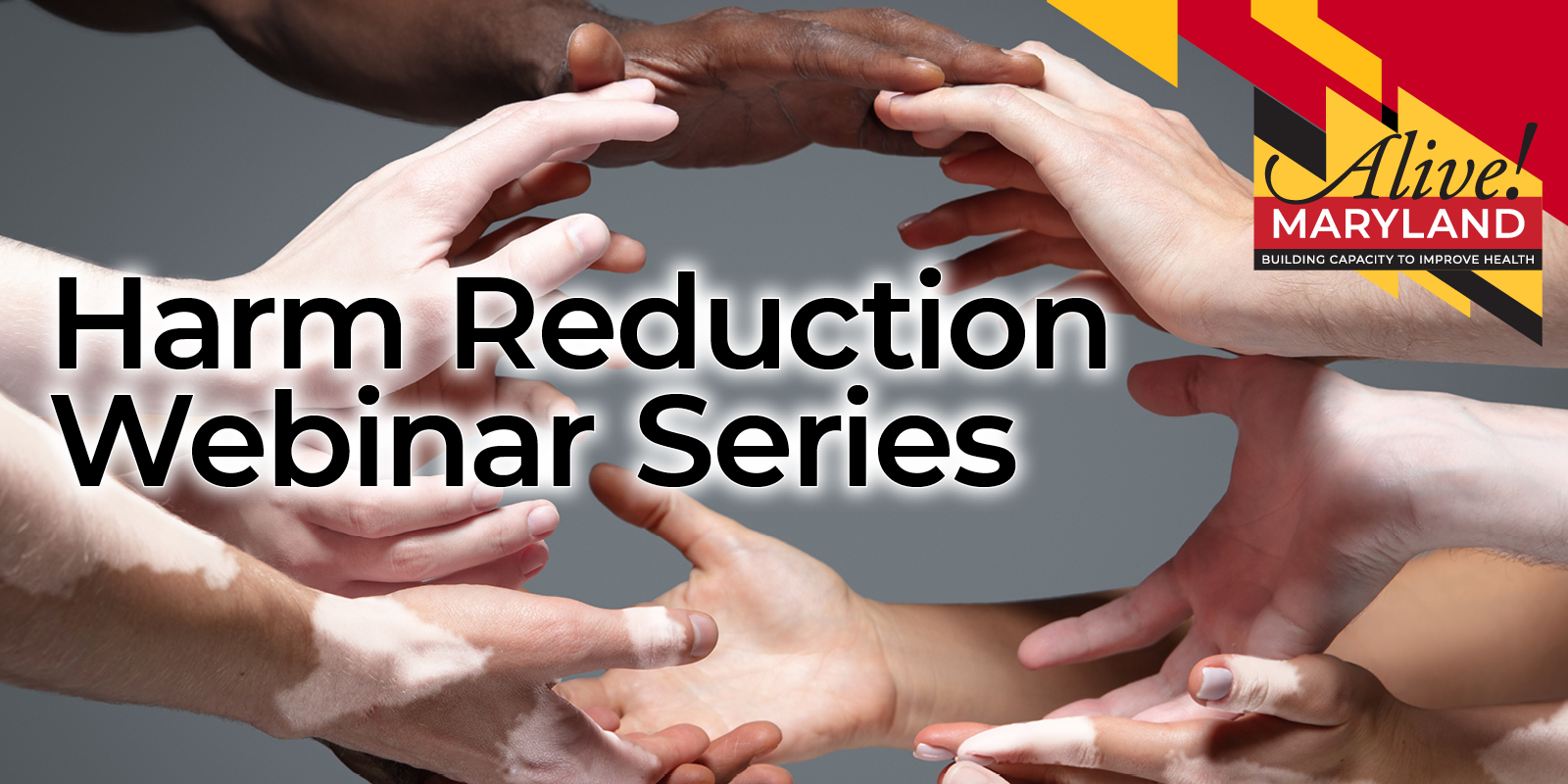
Harm Reduction Webinar Course Series
Launch Date
August 29, 2022
Expiration Date
Credits
There are no credits available for this activity.
Cost
There is no fee for this educational activity.
Universal Activity Number
N/A
Target Audience
Subject Matter
Activity Type
This three-part training series from Alive! Maryland offers evidence-based harm reduction strategies for providers who serve people who use drugs. Topics explored include the principles of psychotherapy for harm reduction and identifying and treating skin infections in people who inject drugs.
An Introduction to Integrative Harm Reduction Psychotherapy (IHRP): Clinical Rationale, Theory, and Technique
Harm reduction meets people wherever they are ready to begin their positive change journeys, supports the full range of positive change goals and emphasizes empowerment and collaboration between therapist and client. Drawing on relational, psychodynamic, cognitive-behavioral and mindfulness therapies, IHRP techniques are uniquely tailored to each person. A central focus on therapeutic alliance and relationship creates a safe context in which to clarify the meanings and functions of risky and addictive behavior, enhance self-regulation and develop alternative healthier, self-affirming solutions. Tatarsky will discuss harm reduction’s core principles, the limitations of traditional disease model based abstinence-only treatment, IHRP’s clinical rationale, supporting biopsychosocial theory and seven therapeutic tasks.
Faculty: Andrew Tatarsky, PhD
Integrative Harm Reduction Psychotherapy: The Seven Theraputic Tasks — Skills and Strategies
Integrative Harm Reduction Psychotherapy consists of seven therapeutic tasks: managing the therapeutic alliance, the therapeutic relationship heals, enhancing self-management, assessment as treatment, embracing ambivalence, harm reduction goal setting and personalized planning for positive change. Specific techniques for achieving each task will be described including empathic listening and reflection create safety and alliance, Urge Surfing, Microanalysis, Unwrapping the Urge, dialoguing with both sides of the ambivalence, 18 Alternatives and the Optimal Use Plan.
Faculty: Andrew Tatarsky, PhD
Injection Drug Use: Wound and Skin Changes
More than 60% of people who inject drugs (PWID) report having skin problems such as abscesses, ulcers, cellulitis, and other serious skin infections. Skin infection in PWID pose significant risks, including endocarditis, septicemia, and necrotizing fasciitis, which increases morbidity and healthcare costs for this population. To prevent the progression and spread of wounds in PWID, providers must be educated on the complications of drug use in this population and create a culture of trust to ensure this population seeks care.
Faculty: Barbara Pieper, PhD, RN, CWOCN, ACNS-BC, FAAN
